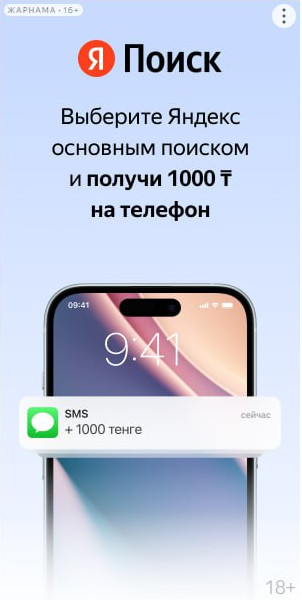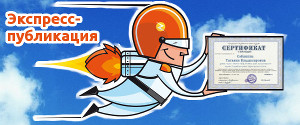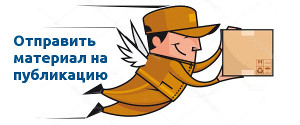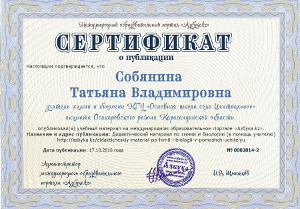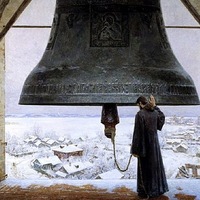Урок английского языка: «British, American and Kazakhstan money»
|
Новокрещинов Игорь Валерьевич, преподаватель иностранных языков, вторая квалификационная категория высшего уровня, КГКУ «Петропавловский |
План урока по предмету «Профессиональный английский язык» для обучающихся на бухгалтерском отделении
Цель: формирование
Задачи:
А) обучающая: ознакомить обучающихся с новой лексикой, обеспечить ее первичное усвоение, продолжить формирование навыка употребления обучающимися прошедшего неопределенного времени в устной и письменной речи, обучать аудированию и чтению текстов профессиональной направленности по теме урока
Б) воспитательная: прививать чувство гордости за национальную валюту Казахстана — тенге, воспитывать уважение к национальным валютам других стран
В) развивающая: развивать внимание, логическое мышление, память, расширить кругозор обучающихся
Тип занятия: комбинированный урок
Методы обучения: практический,
Материальное оснащение: ксерокопии текста для аудирования и чтения, словари, рабочие тетради, разноуровневые карточки, интерактивная доска.
Языковой и речевой материал: правильные и неправильные глаголы, текст и звукозапись текста для аудирования, текст для чтения, новая лексика по теме урока.
Межпредметные связи: русский язык, казахский язык, экономические дисциплины.
План урока:
I.
1. Приветствие, проверка присутствия обучающихся и их готовности к уроку.
2. Сообщение темы, цели и плана урока.
II. Проверка домашнего задания
Назвать изученные лексические единицы на трех языках.
III. Актуализация опорных знаний
1. Фонетическая зарядка.
2. Упражнение на сочетание изученной лексики со знакомой.
IV. Изложение нового материала
1. Презентация темы урока.
2. Аудирование текста об истории американской валюты.
3. Семантизация незнакомых слов из текста.
4. Работа над техникой чтения текста «Национальная валюта Казахстана — тенге».
5. Составление вопросов к текстам и нахождение ответов на них в текстах.
V. Формирование навыка употребления изученной лексики и прошедшего неопределенного времени в устной и письменной речи
1. Определение видовременной формы глаголов в тексте.
2. Формирование навыка употребления прошедшего неопределенного времени в устной и письменной речи.
3. Контроль понимания образования форм прошедшего неопределенного времени.
4. Дифференцированный контроль понимания новой лексики урока.
5. Отгадывание зашифрованных пословиц о деньгах.
VI.
Самоанализ обучающимися их деятельности на уроке, подведение итогов урока, выставление оценок.
VII. Сообщение домашнего задания
Ход урока:
I. Вводно-мотивационный этап
1. Приветствие, проверка присутствия и готовности к уроку.
Good morning, students! Sit down, please! Let’s begin our lesson. Answer my questions, please. What is the date today? Today is the 27th of September.
What is the day of week today? Today is Thursday.
Who is on duty today? … is on duty.
Who is absent today? … are absent.
Are you ready for the lesson? Yes, we are.
2. Сообщение темы, цели и плана урока.
The topic of our lesson is «British, American and Kazakhstan money. The Past Indefinite Tense.» Today at the lesson you will learn about British, American and Kazakhstan money, read and listen to the text about the history of money. You will also review the Past Indefinite Tense.
II. Проверка домашнего задания
Let’s check up your home task. Your home task was to learn the new words. Now take a card with the word and translate the word into three langauges: English, Kazakh and Russian.
(The students are sitting. The teacher is coming to a student and he/she is taking a card).
|
to use
|
to compel
|
coin
|
relative
|
|
silver
|
to maintain
|
capable
|
монета
|
|
pure
|
to weigh
|
to tend
|
способный
|
|
debt
|
certain
|
respective
|
весить
|
|
күміс
|
құрастыру
|
келісу
|
салыстырмалы
|
|
уәкілдік
|
ұмтылу
|
борыш
|
тарту
|
III. Актуализация опорных знаний
1. Фонетическая зарядка
Read the following words after me in chorus:
- outpost
- to use
- silver
- pure
- debt
- to compel
- to maintain
- to weigh
- certain
- coin
- to constitute
- capable
- to tend
- pound
- overvalue
- undervalue
- respective
- accordance
- relative
There are not only words you know. But also there are some words you don’t know. What are they? Right. They are pound, overvalue, undervalue. Today you will learn these and some more new words.
Read the words once more (individually). Student A is reading, then 2 more students.
2. Упражнение на сочетание изученной лексики со знакомой.
Make up
(The students are combining the learned vocabulary with the known one).
Correct answers:
| to undervalue to maintain relative 1-pound capable to use colonial pure silver national to weigh |
money order comfort note worker force outpost orange juice plate debt 70 kilograms |
IV. Изложение нового материала
Методы изложения: коммуникативный, практический
1. Презентация темы урока
Take a coin. What country is it from? Why do you think so?
Look at the whiteboard. What is this? This is money. What country is the money from? What is the name of the money? The money is from Great Britain. (слайды) How many pounds is this note?
What is the national currency of Kazakhstan? (tenge) Of Great Britain? (pound) Of the USA? (dollar)
Match each country with its money and symbol.
2. Аудирование текста об истории американской валюты
Now you are going to listen to the text about the history of the American dollar. Be attentive! After that you will have to ask and answer some questions on the text.
As an outpost of Great Britain, colonial America of course used British pounds, pence, and shillings as its money.
Great Britain was officially on a silver standard, with the shilling defined as equal to 86 pure Troy grains of silver, and with silver as
However, Britain also coined gold and maintained a bimetallic standard by fixing the gold guinea, weighing 129.4 grains of gold, as equal in value to a certain weight of silver. In that way, gold became, in effect, legal tender as well. Unfortunately, by establishing bimetallism, Britain became perpetually subject to the evil known as Gresham’s Law, which states that when government compulsorily overvalues one money and undervalues another, the undervalued money will leave the country or disappear into hoards, while the overvalued money will flood into circulation. Hence, the popular catchphrase of Gresham’s Law: «Bad money drives out good.» But the important point to note is that the triumph of «bad» money is the result, not of perverse
In seventeenth — and
In the sparsely settled American colonies, money, as it always does, arose in the market as a useful and scarce commodity and began to serve as a general medium of exchange. Thus, beaver fur and wampum were used as money in the north for exchanges with the Indians, and fish and corn also served as money. Rice was used as money in South Carolina, and the most widespread use of commodity money was tobacco, which served as money in Virginia. The
While commodity money continued to serve satisfactorily in rural areas, as the colonial economy grew, Americans imported gold and silver coins to serve as monetary media in urban centers and in foreign trade. English coins were imported, but so too were gold and silver coins from other European countries.
Among the gold coins circulating in America were the French guinea, the Portuguese «joe," the Spanish doubloon, and Brazilian coins, while silver coins included French crowns and livres.
It is important to realize that gold and silver are international commodities, and that therefore, when not prohibited by government decree, foreign coins are perfectly capable of serving as standard moneys. There is no need to have a national government monopolize the coinage, and indeed foreign gold and silver coins constituted much of the coinage in the United States until Congress outlawed the use of foreign coins in 1857. Thus, if a free market is allowed to prevail in a country, foreign coins will circulate naturally. Silver and gold coins will tend to be valued in proportion to their respective weights, and the ratio between silver and gold will be set by the market in accordance with their relative supply and demand.
(The students are listening to the text with visual support.)
3. Семантизация незнакомых слов из текста. Фонетическая отработка новой лексики
Look at the blackboard. There are some new words from the text. Do you know them? Translate them using the dictionaries.
| equal legal tender to accept rate to establish perpetually to overvalue to undervalue to disappear circulation competition mint ratio outflow commodity supply demand |
тең заңды төлем қаражаты қабыл алу мөлшерлеме, арасалмақ жасақтау рқашан асыра бағалау жете бағалау ғайып болу айналыс бәсеке валюталық тепе-теңдік капиталдың кетісі тауар ұсыныс талап |
равный законное платежное средство принимать курс, соотношение основывать постоянно переоценивать недооценивать исчезать обращение конкуренция валютный паритет отток капитала товар предложение спрос |
(The students are looking for the translation of unknown words and write down it in the
4. Работа над техникой чтения текста «Национальная валюта Казахстана — тенге»
But Kazakhstan has its own currency. What is the currency of Kazakhstan? Tenge. Now you are going to read the text about the national currency of Kazakhstan — tenge.
The national currency of Kazakhstan is tenge
The tenge is the currency of Kazakhstan. It is divided into 100 tïın. It was introduced on 15 November 1993 to replace the Soviet ruble at a rate of 1 tenge = 500 rubles.
The word tenge in the Kazakh language means a set of scales. The origin of the word means being equal, balance.
Kazakhstan was one of the last countries of the CIS to introduce a national currency. On November 12, 1993, a decree of the President of Kazakhstan, «About introducing national currency of the Republic of Kazakhstan», was issued. On November 15, 1993, the tenge was brought into circulation. As such, November 15 is celebrated as the «Day of National Currency of the Republic of Kazakhstan». In 1995, a tenge printing factory was opened in Kazakhstan. The first tenge was printed abroad, in the
In 1993, the first series of coins were introduced in denominations of 2, 5, 10, 20 and 50 tiin featuring the national arms and were struck in bronze. 1, 3, 5, 10 and 20 tenge depicted animals.
In 1995, a new series of coins was introduced, which excluded the tiin having 1 tenge being the smallest denomination. 50 tenge were later introduced in 1997, followed by 100 tenge in 2002 replacing the equivalent notes. An irregular 2 tenge coin was also introduced later in 2005. Coins currently in circulation are:
- 1 tenge
- 2 tenge
- 5 tenge
- 10 tenge
- 20 tenge
- 50 tenge
- 100 tenge
The National Bank of Kazakhstan issued banknotes of new series in 2006. They have the same values as the previously existed ones. Notes currently in circulation are:
- 200 tenge
- 500 tenge
- 1,000 tenge
- 2,000 tenge
- 5,000 tenge
- 10,000 tenge.
(The students are reading the text sentence by sentence).
5. Составление вопросов к текстам и нахождение ответов на них в тексте.
Make up some questions to the contents of the two texts.
(The students are making up questions on their own depending on the level of their knowledge and answering each other’s questions).
V. Формирование навыка употребления изученной лексики и прошедшего неопределенного времени в устной и письменной речи
Методы: интерактивный, самостоятельная работа, игровой
1. Определение видовременной формы глаголов в тексте (прошедшее неопределенное время) и повторение образования утвердительной, вопросительной и отрицательной форм данного времени. (слайды)
Look at the whiteboard. Define which tense the following verbs belong to. This is the Past Indefinite Tense.
a) The formation of the Past Indefinite Tense depending on the verb (regular/irregular).
b) The reading of the flexion -ed according to the last sound.
c) The division of the verbs from the text into three columns according to the reading of the flexion.
2. Формирование навыка употребления прошедшего неопределенного времени в устной и письменной речи.
Now let’s do some exercises.
Read a sentence. Make up interrogative and negative sentences.
(The students are reading the first 16 sentences ex.2)
3. Контроль понимания образования форм прошедшего неопределенного времени.
I need 7 volunteers. Come to the whiteboard. Make up interrogative, negative and affirmative sentences using the following cards:
(A group of students is making up three forms of the Past Indefinite Tense at the whiteboard).
3. Дифференцированный контроль понимания новой лексики урока.
Now work individually. Fill in the gaps in your cards. After that read the text on your card.
(The students are working with individual cards. They are filling in gaps. Then they are reading aloud their texts.)
1) As an ___________ of Great Britain, colonial America of course ________ British pounds, pence, and shillings as its _________.
Great Britain was officially on a __________ standard, with the shilling defined as ________ to 86 ________ Troy grains of silver, and with silver as
debts, equal, money, outpost, pure, silver, used
2) However, Britain also coined gold and maintained a bimetallic standard by fixing the gold guinea, _____________ 129.4 grains of gold, as _________ in value to a ___________ weight of silver. In that way, gold became, in effect, __________________________ as well. Unfortunately, by establishing bimetallism, Britain became _______________ subject to the evil known as Gresham’s Law, which states that when government compulsorily overvalues one money and ______________ another, the undervalued money will leave the country or disappear into hoards, while the overvalued money will flood into circulation.
certain, equal, legal tender, perpetually, undervalues, weighing
3) Hence, the popular catchphrase of Gresham’s Law: «Bad _________ drives out good." But the important point to note is that the triumph of «bad» money is the result, not of perverse
competition, legal tender, money, using
4) In the sparsely settled American colonies, money, as it always does, arose in the market as a useful and scarce _____________ and began to serve as a general medium of ____________. Thus, beaver fur and wampum were _________ as money in the north for exchanges with the Indians, and fish and corn also served as money. Rice was used as money in South Carolina, and the most widespread use of commodity money was tobacco, which served as _________ in Virginia. The
commodity, currency, exchange, money, used
5) While ________ money continued to serve satisfactorily in rural areas, as the colonial economy grew, Americans imported gold and silver _________ to serve as monetary media in urban centers and in foreign __________. English coins were imported, but so too were gold and silver coins from other European _____________.
coins, commodity, countries, trade
6) Among the gold coins ____________ in America were the French guinea, the Portuguese «joe," the Spanish doubloon, and Brazilian coins, while silver __________ included French crowns and livres.
It is important to realize that gold and silver are international ____________, and that therefore, when not prohibited by government decree, foreign coins are perfectly _________ of serving as standard moneys.
capable, circulating, coins, commodities
7) There is no need to have a national government monopolize the coinage, and indeed foreign gold and silver coins ___________ much of the coinage in the United States until Congress outlawed the _________ of foreign coins in 1857. Thus, if a free market is allowed to prevail in a country, foreign coins will ___________ naturally. Silver and gold coins will _____ to be valued in proportion to their ________ weights, and the ratio between silver and gold will be set by the market in __________ with their relative supply and _________.
accordance, circulate, constituted, demand, respective, tend, use
8) The tenge is the ______ of Kazakhstan. It is ________ into 100 tïın. It was introduced on 15 November 1993 to replace the Soviet _______ at a rate of 1 tenge = 500 rubles.
The word tenge in the Kazakh language means a set of scales. The origin of the word means being _______, balance.
currency, divided, equal, ruble
9) Kazakhstan was one of the last countries of the CIS to introduce a national _______. On November 12, 1993, a decree of the President of Kazakhstan, «About introducing national currency of the Republic of Kazakhstan», was issued. On November 15, 1993, the tenge was brought into ___________. As such, November 15 is celebrated as the «Day of National Currency of the Republic of Kazakhstan». In 1995, a tenge printing factory was opened in Kazakhstan. The first tenge was printed _________, in the
abroad, circulation, coins, currency
10) In 1993, the first series of __________ were introduced in denominations of 2, 5, 10, 20 and 50 tiin featuring the national arms and were struck in bronze. 1, 3, 5, 10 and 20 tenge depicted animals.
In 1995, a new series of coins was introduced, which excluded the tiin having 1 tenge being the smallest ___________. 50 tenge were later introduced in 1997, followed by 100 tenge in 2002 replacing the equivalent notes. An irregular 2 tenge coin was also introduced later in 2005.
The National Bank of Kazakhstan issued _____________ of new series in 2006. They have the same _________ as the previously existed ones.
banknotes, coins, denomination, values
11) In seventeenth- and
coins, maintained, overvalued, prices, outflow
4. Отгадывание зашифрованных пословиц о деньгах.
You must decipher the following proverbs about money. Find the equivalent to one of them.
VI. Рефлексивно-оценочный этап
Самоанализ студентами их деятельности на уроке, подведение итогов урока, выставление оценок.
Today you have worked very well. You reviewed the Past Indefinite Tense, read and listened to some texts about money of Kazakhstan and America, worked individually and as the whole group. What did you learn and in what degree? Did you like the lesson? (in three languages)
Your marks are…
VII. Сообщение домашнего задания
Write down your home task. You must learn the new vocabulary and make up a dialogue illustrating one of the proverbs.
Our lesson is over.
Список используемой литературы:
1. И. Богацкий, Н. Дюканова «
2. Murray N. Rothbard httpsss://www.mises.org/daily/5020/Commodity-Money-
- 14455 просмотров




